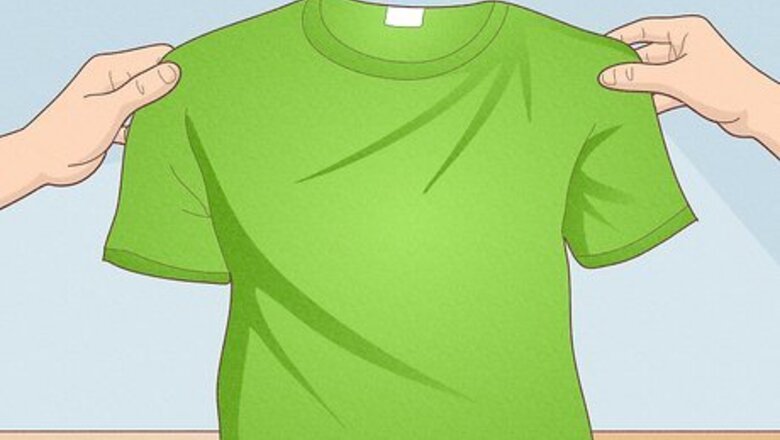
views
Cutting a T-Shirt
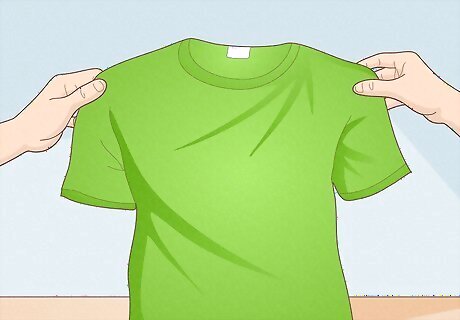
Choose a baggy t-shirt to modify. Bright, neon colors were very popular in the 80s, but you can use a neutral color as well, such as black, white, or grey. You will be cutting this shirt up, so make sure it's one you don't mind permanently altering. A blank shirt would work best, but you can use a decorated one too.
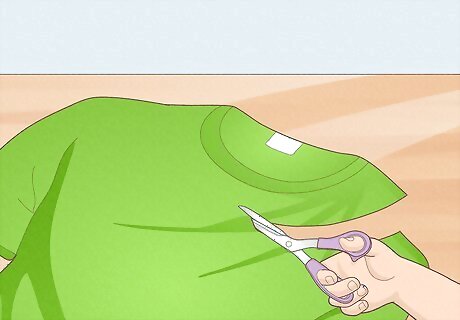
Cut the neckline wider with sharp fabric scissors. Begin by making a snip 1 to 2 inches (2.54 to 5.08 centimeters) from each shoulder seam. Connect the snips with a curved line, just below the collar. This will give you an off-the-shoulder look. You can cut through both layers of fabric at the same time for something quick and easy. For a more professional finish, cut the front neckline lower than the back.
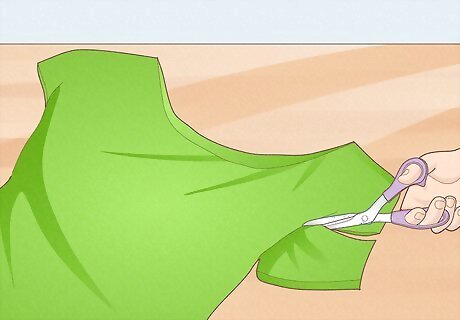
Consider cutting the sleeves off. You don't have to do this, but it's a great way to turn your shirt from a t-shirt to a tank top. Cut the sleeves off following the seam on the shirt body, not the sleeve. You can make the arm holes bigger by cutting a littler further down past the armpit.
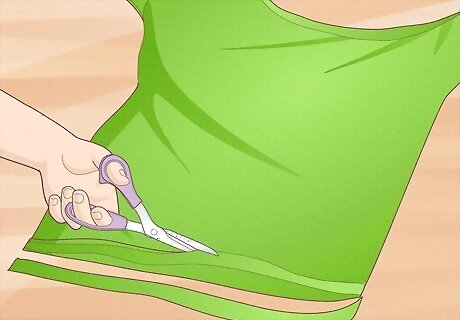
Cut the bottom hem off of the shirt. You can cut as much of the hem off as you want. For a high-low look, cut the front hem higher than the bottom one.
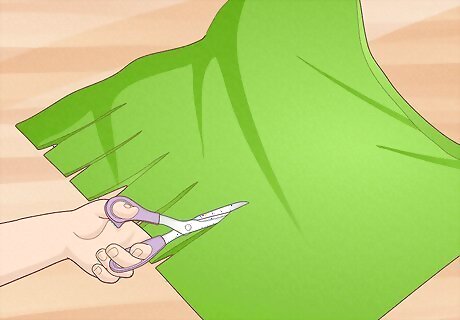
Cut a fringe into the hem. It needs to go about a quarter of the way up the shirt. The tassels need to be ½ inch (1.27 centimeters) wide. Try to cut through both layers of fabric. This way, you can be sure that the fringes are even on both sides of the shirt. You'll also save some time. If you made a high-low hem, cut the fringes separately. Make sure that they are the same length (however many inches/centimeters long you choose) on both sides of the shirt.
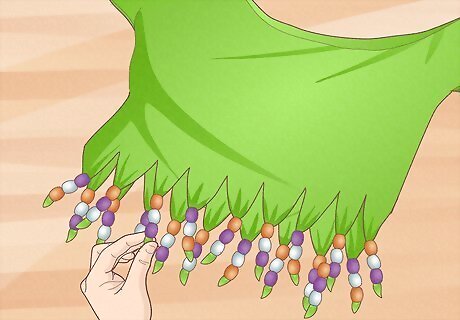
Consider adding beads onto the fringe. Twist the tassel into a tube, then thread it through a plastic bead, such as a pony bead. You can add as many beads as you want; 1 to 3 would be ideal. Knot the tassel below the bead. You can also use a large yarn needle to thread the beads onto the tassels. Alternate the colors and the number of beads on the tassels.

Decorate the shirt further, if desired. You can leave the shirt as is, or you can decorate it further. If the shirt is blank, consider adding an iron-on transfer. You can also paint the shirt instead using fabric paint.
Creating a Printed T-Shirt
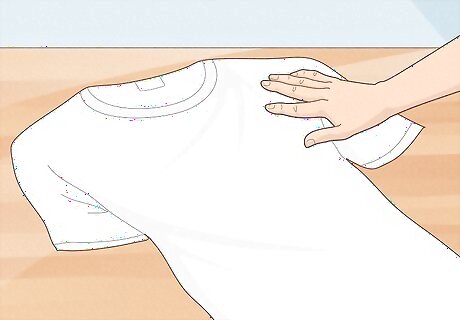
Choose a blank, solid-colored t-shirt. Transfer paper prints are usually translucent, so the shirt's color will show through. For best results, use a white shirt. If you must have a colored shirt, be aware that the image may not be as bright. You can also use transfer paper meant for dark shirts, but it will have a white background. You will have to trim around the image, or the white will show up. Baggy t-shirts were very popular in the 80s. If you want something more modern that is simply vintage inspired, you can use a fitted shirt instead. If you want something that looks vintage, consider using an old shirt. The more faded, the better.
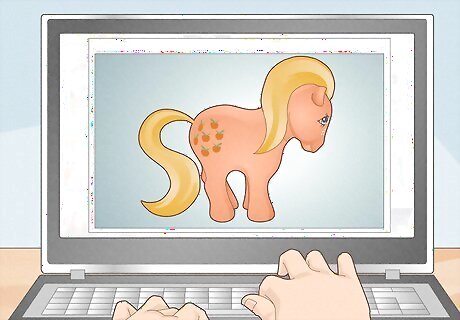
Choose a vintage image to print. Logos from 1980s cartoons work the best. Look for something that is larger than your hand, and has the title of the show as well as some of the characters. Make sure that you get the right generation, however; many of the original cartoons got reboots. For example, the new My Little Ponies look very different from the original ones. This will defeat the whole vintage look. Some of the most popular ones were: Thundercats, Mighty Mouse, and Rainbow Brite. Care Bears, My Little Pony, and Popples were also popular. You can also use other popular films and shows, such as: Back to the Future, Dark Crystal, Ghostbusters, Labyrinth, Star Wars: Return of the Jedi, etc. You can also use logos from bands and other things that were popular in the 80s, such as MTV or the Cabbage Patch dolls.
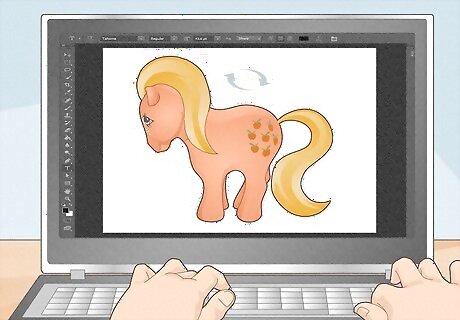
Reverse the image using an image editing program. Copy the image from your web browser, then paste into an image editing program. Use the mirror or flip option to reverse the image. If your image has words on it, they will be backwards. If the image is too big, you can shrink it. If the image is too small, you can try to enlarge it, but be aware that you may loose some quality. If you are using dark transfer paper, you typically don't have to reverse the image.
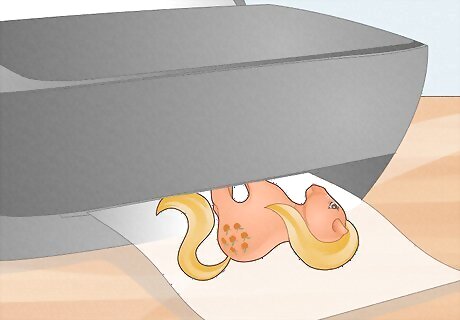
Print the image using transfer paper. Craft stores and fabric stores sell many different types of transfer paper, so make sure that you get the right kind for your shirt. If you have a white shirt, you can use any type of transfer paper. If you have a colored shirt, you will need to get one designed for colored shirts. Remember to print on the coated side of the transfer paper. Some transfer papers are made specifically for certain types of printers, so double-check before buying it. It needs to match your printer.
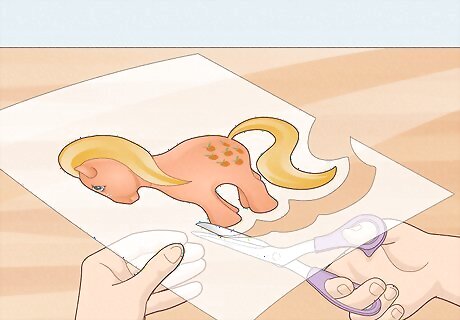
Trim off the excess paper, if needed. Some types of transfer paper, like the kind used for dark shirts, have a white background. If you don't trim this background off, it will show up on the finished product. Use a small pair of scissors to carefully trim around the image.
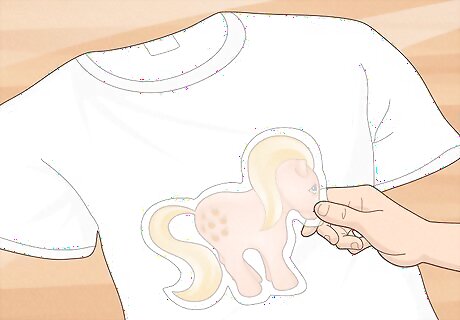
Place the paper image-side-down against your t-shirt. Make sure that the image is centered. The top of the image should reach just past the armhole. If you are using dark transfer paper, you will typically have to place it image-side-up; double-check the instructions.
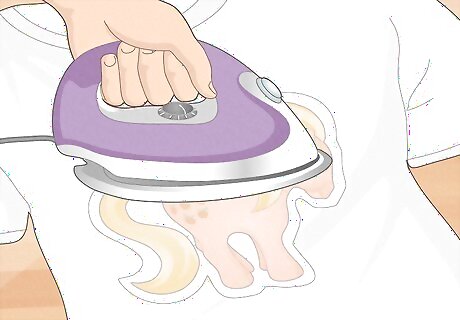
Iron the image using the directions on the package. Different types of image transfer papers have different requirements, so read the directions carefully.
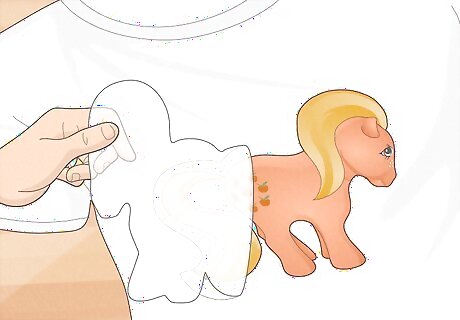
Peel the paper off. The image should be transferred onto the shirt. Don't worry if it doesn't look perfect. This will help give it a vintage feel.
Painting a T-Shirt
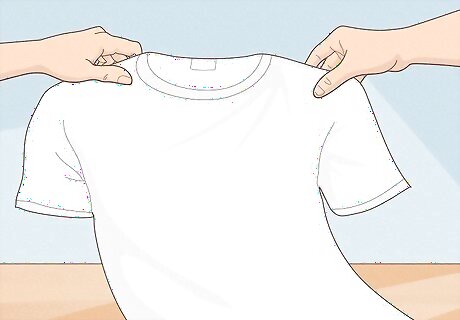
Choose a t-shirt. Baggy shirts were all the rage in the 80s. A white shirt will show colors the best, but you can use a colored one as well. Make sure that the shirt is blank, without any colors or patterns on it.
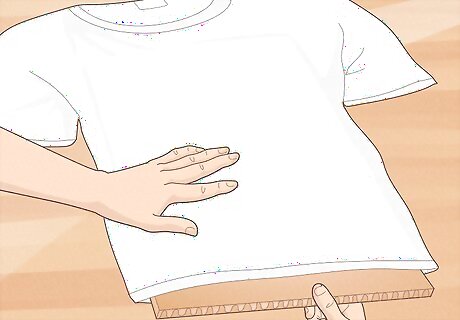
Tuck a sheet of cardboard into the shirt. The cardboard needs to be the same size as the shirt. It will prevent the paint from getting onto the back of the shirt.
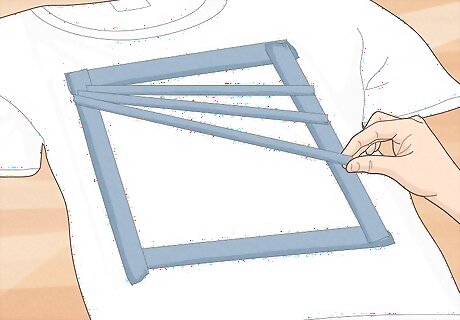
Make geometric patterns using painter's tape. Start by making a large rectangle on your shirt with painter's tape. Lay down more strips of tape at different angles and lengths to create a geometric pattern. Smooth down the edges of the tape against the shirt. Cut the tape in half lengthwise to create thinner pieces and borders. For a simpler design, create large squares over the shirt. Make some tilted at different angles.
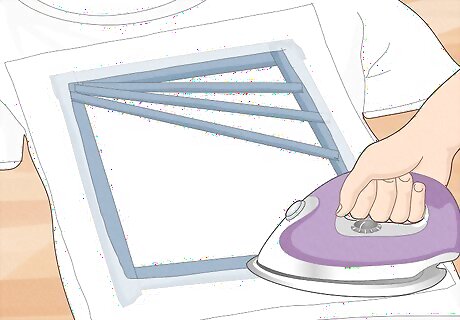
Iron freezer paper to the areas outside the stencil, if needed. This is only necessary if you will be splattering the paint on. If you will be painting it on, you can skip this step.
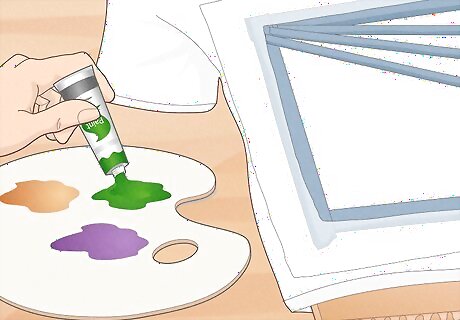
Pour some fabric paint onto a plate or palette. Try to use a few different colors, the brighter, the better.
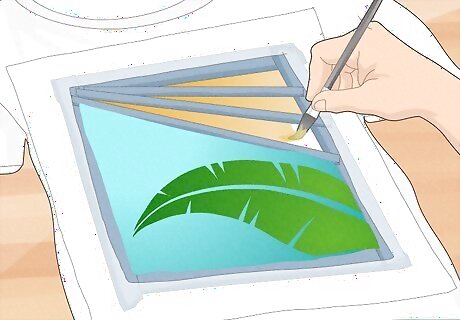
Paint the shirt. You can apply the paint as a solid color, or you can splatter it on instead. Use a new foam brush for each color; if you are using a bristle brush, simply rinse it. Use a sponge brush to pounce the paint onto the shirt. Don't drag it, or you might get paint under the tape. Use a stiff-bristled brush to splatter the paint onto your design.
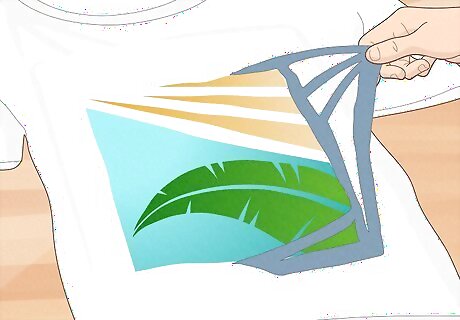
Peel the stencils away while the paint is still wet. If you wait until the paint dries, you will risk peeling the paint away too. Be careful not to smudge the wet paint.
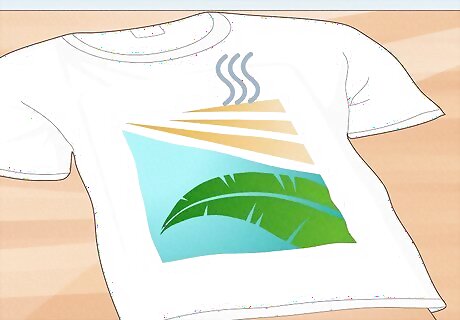
Let the paint dry. Every so often, run your hand inside the shirt to separate it from the cardboard. If you don't do this, the shirt may stick to the cardboard.

Consider adding more designs with puff paint. This is a great idea for shirts painted a solid color, but you can do this for splatter painted shirts too. Use black or a contrasting color to draw free-hand designs onto your shirt. Try using round or organic shapes, such as spirals, squiggles, or suns to make them stand out. If you painted your shirt a solid color with a foam brush, consider splattering paint over it with a stiff bristle brush.
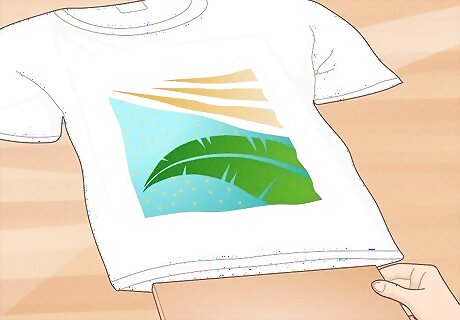
Remove the cardboard once the puff paint dries. Puff paint usually needs to dry overnight. Once it's dry, pull the cardboard out of the shirt. Your shirt is now ready to wear!

















Comments
0 comment